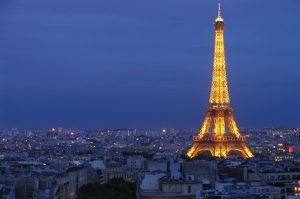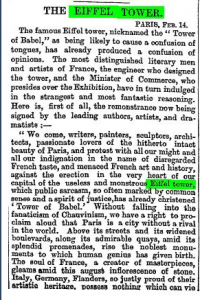The Eiffel Tower: a quick tour
The Eiffel Tower is one of the most famous and most visited landmarks in the world. It opened on 31 March 1889, 128 years ago today.

History and background
It was designed specifically for the World’s Fair; to commemorate the centenary of the French Revolution. The French government had announced an international exposition and a design competition for a monument to be built on the Champ-de-Mars in Paris. The structure was meant to be temporary; several years only. The committee received over 100 applications and chose engineer Gustave Eiffel’s design of what was proposed to be the world’s tallest man-made structure.
Useless and monstrous
Gustave Eiffel’s company were noted bridge builders. (Eiffel also designed the framework of the Statue of Liberty). In fact it was one of his employees, an architect named Stephen Sauvestre, who came up with the concept of the Eiffel Tower. But it did not get off to a great start. Once the plans were made public a petition was circulated protesting the construction of what was referred to as ‘useless and monstrous’.
It did not stop construction which began on 28 January 1887, and was completed on 31 March 1889 – a very short span of time for a monument of such scale.
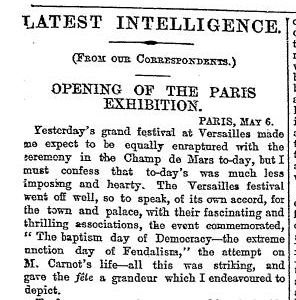
The design
The Tower is a huge wrought iron lattice skeleton divided into three platforms. The first platform measures 172 feet (57 meters) and the second 377 feet (115 meters) from the ground. The third platform is 905 feet (276 meters) above the ground.
In 1889 there were 1,710 steps to the summit platform but due to many renovations over the years the number of steps have varied. Since the 1980s the number of steps has increased to 1,920. The Tower is bronze in colour though many have long assumed it is silver.
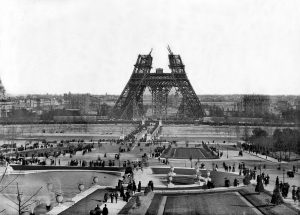
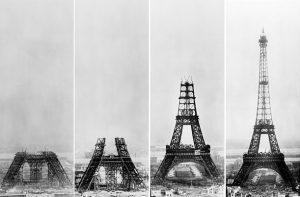
Tallest
Upon completion the Eiffel Tower instantly became the world’s tallest building. It stands at 984 feet tall and held the title for 41 years before the Chrysler Building in New York topped it in 1930. But in 1957, a 67-foot antenna was added, making the Tower six feet taller than the Chrysler Building. But soon afterward, in 1931, it was eclipsed by The Empire State Building.

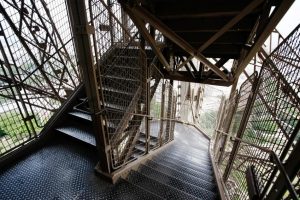
War and the Tower
During WWI the Tower’s height became an asset for radiotelegraph transmitting.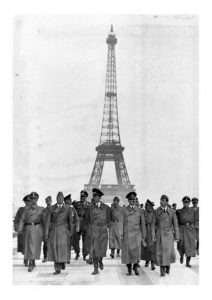
When German troops occupied Paris in 1940, city officials allegedly cut the lift cables on the Tower. This was done so that whoever tried to hang the swastika flag would have to climb all 1,710 steps. Apparently they did so anyway but the flag was blown away in a heavy wind.
Hitler had given orders for the city of Paris to be razed – including the Eiffel Tower – but General Dietrich von Choltitz disobeyed Hitler who he believed had gone mad.
Eiffel Tower Today
The Eiffel Tower is one of the best known monuments in the world and its silhouette has been replicated endlessly. In Las Vegas, a 541-foot (165m) replica of the Tower – as well as many other famous French landmarks and monuments – exists as part of its Paris experience. Every seven years the real Tower is refurbished and painted by hand.
The Tower also continues to serve an important role in television and radio broadcasting. It attracts more visitors (around 6.5 million each year) than any other single paid tourist attraction in the world.
The Tower is illuminated at night by 20,000 light bulbs and sparkles for 5-10 minutes on the hour. Apparently, there is never a bad time to visit the Eiffel Tower.
If you’re inspired to visit then the Information & Reference Library has a range of travel guides (Lonely Planet, Rough Guide and Timeout) for Paris. But beware … it is currently illegal to take photographs of the Eiffel Tower at night (it’s classed as an art work) and is punishable by a massive fine. Special permission is required from the Société d’Exploitation de la Tour Eiffel to share the images.
You can read the original news reports in the Times Digital Archive – available online and free to library members – by scrolling to and clicking on the icon in our Online Reference Information & Reference Services webpage.
[Sonal Basi, Library Assistant]

